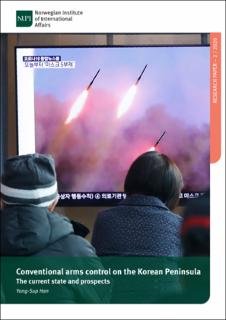| dc.description.abstract | At the end of 2017, the Korean Peninsula reached the brink of a nuclear war, as the US president Donald Trump and the North Korean leader Kim Jong-un exchanged words of nuclear threats each other. A tug of war as to whose nuclear button is bigger and stronger exacerbated the nuclear crisis. However, the South Korean President Moon Jae-in intervened to resolve the crisis by taking advantage of the Pyeongchang Winter Olympics. In doing so, President Moon intended to pursue denuclearisation and peace-building on the Korean Peninsula at the same time. North Korean Chairman Kim Jong-un responded positively to the South Korean call to hold the inter-Korean summit and the Trump-Kim summit. In order to end the Korean war and promote peace-building on the Korean Peninsula including termination of hostile acts on inter-Korean relations, the two Koreas adopted the April 27 Panmunjom Declaration, the September 19th Pyongyang Joint Declaration and the Inter-Korean Military Agreement at their summit in 2018. The Military Agreement is aimed at reducing tension and building trust between the two Koreas through conventional arms control, while the North Korean nuclear issue is being resolved through the US-DPRK summit. The September 19th Military Agreement is a modest but remarkable success in arms control history when compared with a long-term stalemate or even retreat in the contemporary international arms control arena. Indeed, arms control is at its lowest point in history, so dim are its prospects. Nevertheless, heated debates are taking place, both at home inside South Korea and abroad, over the legitimacy and rationality of the Sept. 19th Military Agreement. With little progress on the denuclearisation issue at the Kim-Trump summit and no sign of easing economic sanctions on Pyongyang, North Korea has test-fired short-range missiles ten times to exert pressure on the United States, undermining peace and stability on the Korean Peninsula. Against this backdrop, this policy brief intends to analyse the true meaning of the September 19 Military Agreement between the two Koreas, to identify its problems and policy implications in order to draw up supplementary measures to implement it successfully. Furthermore, the paper will draw some implications for the relationship between progress on North Korea’s denuclearisation issue and further conventional arms control on the Korean Peninsula. | en_US |

